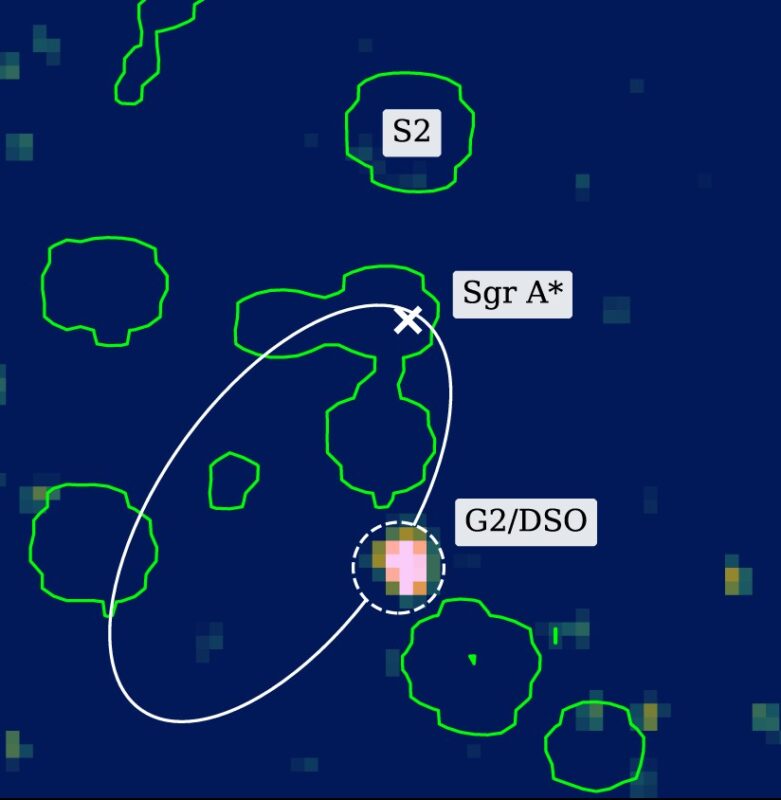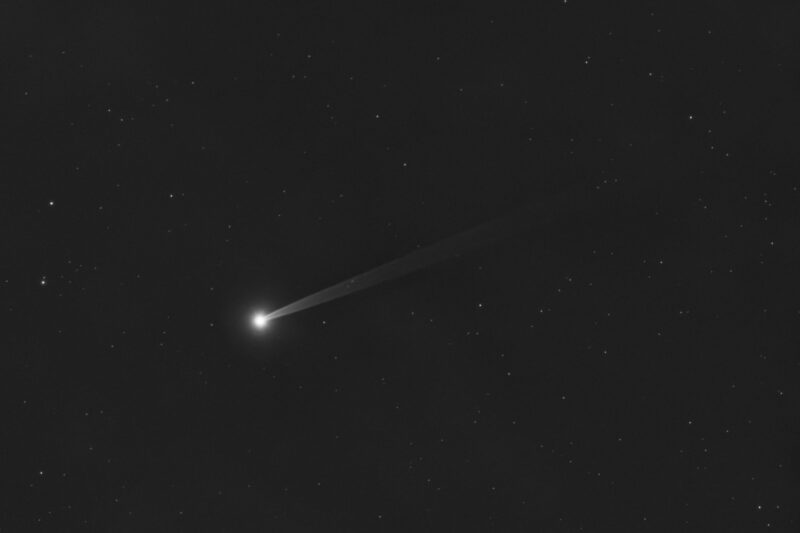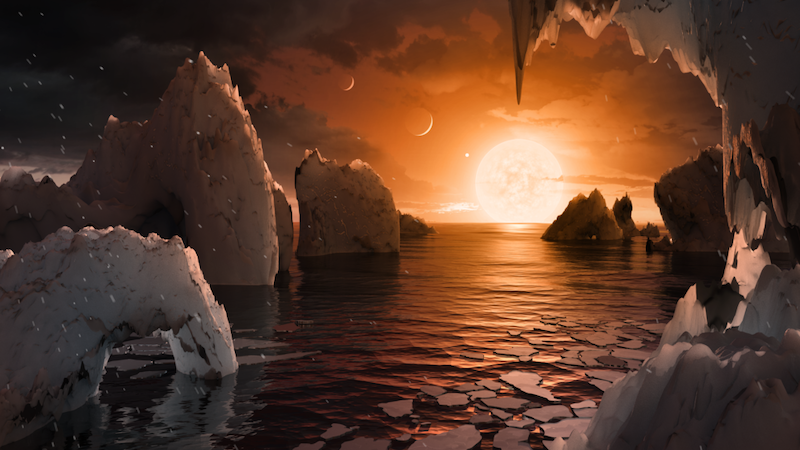Now Reading: Wide-orbit planets support the possibility of Planet 9
-
01
Wide-orbit planets support the possibility of Planet 9
Wide-orbit planets support the possibility of Planet 9


- Wide-orbit planets are those circling their home star at least 100 times farther than Earth orbits the sun.
- These planets might not be so rare. In fact, they could be the natural result of chaotic early solar system development for stars in star clusters, said researchers.
- Some planets – like a hypothetical Planet 9 – could be flung out of the inner regions of the solar system but remain in the system thanks to gravity from nearby stars.
Rice University published this original story on May 27, 2025. Edits by EarthSky.
The mystery of wide-orbit planets
In the cold, dark outskirts of planetary systems far beyond the reach of the known planets, mysterious gas giants and planetary masses silently orbit their stars, sometimes thousands of astronomical units (AU) away. For years, scientists have puzzled over how these wide-orbit planets, including the elusive Planet 9 theorized in our own solar system, could have formed. On May 27, 2025, a team of astronomers said they may have finally found the answer.
In a new study published in the peer-reviewed journal Nature Astronomy, researchers from Rice University and the Planetary Science Institute used complex simulations to show that wide-orbit planets are not anomalies. Instead, they are natural by-products of a chaotic early phase in planetary system development. This phase occurs while stars are still packed tightly in their birth clusters and planets are jostling for space in turbulent, crowded systems.
André Izidoro, assistant professor of Earth, environmental and planetary sciences at Rice University, is the study’s lead author. Izidoro said:
Essentially, we’re watching pinballs in a cosmic arcade. When giant planets scatter each other through gravitational interactions, some are flung far away from their star. If the timing and surrounding environment are just right, those planets don’t get ejected, but rather they get trapped in extremely wide orbits.

Simulating the early planetary systems
For the study, the team ran thousands of simulations involving different planetary systems embedded in realistic star cluster environments. They modeled a variety of conditions, from systems like our solar system with a mix of gas and ice giants to more exotic systems including those with two suns. What they discovered was a recurring pattern: Planets were frequently pushed into wide, eccentric orbits by internal instabilities, then stabilized by the gravitational influence of nearby stars in the cluster.
Co-author Nathan Kaib, senior scientist and senior education and communication specialist at the Planetary Science Institute, said:
When these gravitational kicks happen at just the right moment, a planet’s orbit becomes decoupled from the inner planetary system. This creates a wide-orbit planet: one that’s essentially frozen in place after the cluster disperses.

Wide-orbit planets and Planet 9
The researchers define wide-orbit planets as having semimajor axes between 100 and 10,000 AU. These distances place them far beyond the reach of most traditional planet-forming disks.
The findings could help explain the long-standing mystery of Planet 9, a hypothetical planet believed to orbit our sun at a distance of 250 to 1,000 AU. Though it has never been directly observed, the odd orbits of several trans-Neptunian objects hint at its presence. Izidoro said:
Our simulations show that if the early solar system underwent two specific instability phases – the growth of Uranus and Neptune and the later scattering among gas giants – there is up to a 40% chance that a Planet 9-like object could have been trapped during that time.
Wide-orbit planets and rogue planets
Interestingly, the study also ties wide-orbit planets to the growing population of free-floating, or rogue planets. These are worlds ejected from their systems entirely. Kaib said:
Not every scattered planet is lucky enough to get trapped. Most end up being flung into interstellar space. But the rate at which they get trapped gives us a connection between the planets we see on wide orbits and those we find wandering alone in the galaxy.
This concept of trapping efficiency – the likelihood that a scattered planet remains bound to its star – is central to the study. The researchers found that solar system-like systems are particularly efficient with trapping probabilities of 5-10%. Other systems, like those composed only of ice giants or circumbinary planets, had much lower efficiencies. Izidoro said:
We expect roughly one wide-orbit planet for every thousand stars. That may seem small, but across billions of stars in the galaxy, it adds up.
New targets for exoplanet hunters
Moreover, the study identifies promising new targets for exoplanet hunters. It suggests that wide-orbit planets are most likely to be found around high-metallicity stars that already host gas giants. That makes these systems prime candidates for deep-imaging campaigns. The researchers also noted that if Planet 9 exists, it could be discovered soon after the Vera C. Rubin Observatory becomes fully operational. With its unparalleled ability to survey the sky in depth and detail, the observatory is expected to significantly advance the search for distant solar system objects. This will increase the likelihood of either detecting Planet 9 or providing the evidence needed to rule out its existence. Izidoro said:
As we refine our understanding of where to look and what to look for, we’re not just increasing the odds of finding Planet 9. We’re opening a new window into the architecture and evolution of planetary systems throughout the galaxy.
More on the search for Planet 9
For more on the thrilling search for Planet 9, watch this interview with EarthSky’s Dave Adalian and Planet 9 hunter Mike Brown.
Bottom line: Researchers have discovered that wide-orbit planets are likely the natural result of the early, chaotic years of a developing planetary system. This discovery bolsters the possibility of a Planet 9 in our solar system.
Source: Very-wide-orbit planets from dynamical instabilities during the stellar birth cluster phase
The post Wide-orbit planets support the possibility of Planet 9 first appeared on EarthSky.
Stay Informed With the Latest & Most Important News
Previous Post
Next Post
-
 012024 in Review: Highlights from NASA in Silicon Valley
012024 in Review: Highlights from NASA in Silicon Valley -
 02Panasonic Leica Summilux DG 15mm f/1.7 ASPH review
02Panasonic Leica Summilux DG 15mm f/1.7 ASPH review -
 03How New NASA, India Earth Satellite NISAR Will See Earth
03How New NASA, India Earth Satellite NISAR Will See Earth -
 04And Thus Begins A New Year For Life On Earth
04And Thus Begins A New Year For Life On Earth -
 05Astronomy Activation Ambassadors: A New Era
05Astronomy Activation Ambassadors: A New Era -
06SpaceX launch surge helps set new global launch record in 2024
-
 07From Polymerization-Enabled Folding and Assembly to Chemical Evolution: Key Processes for Emergence of Functional Polymers in the Origin of Life
07From Polymerization-Enabled Folding and Assembly to Chemical Evolution: Key Processes for Emergence of Functional Polymers in the Origin of Life




















